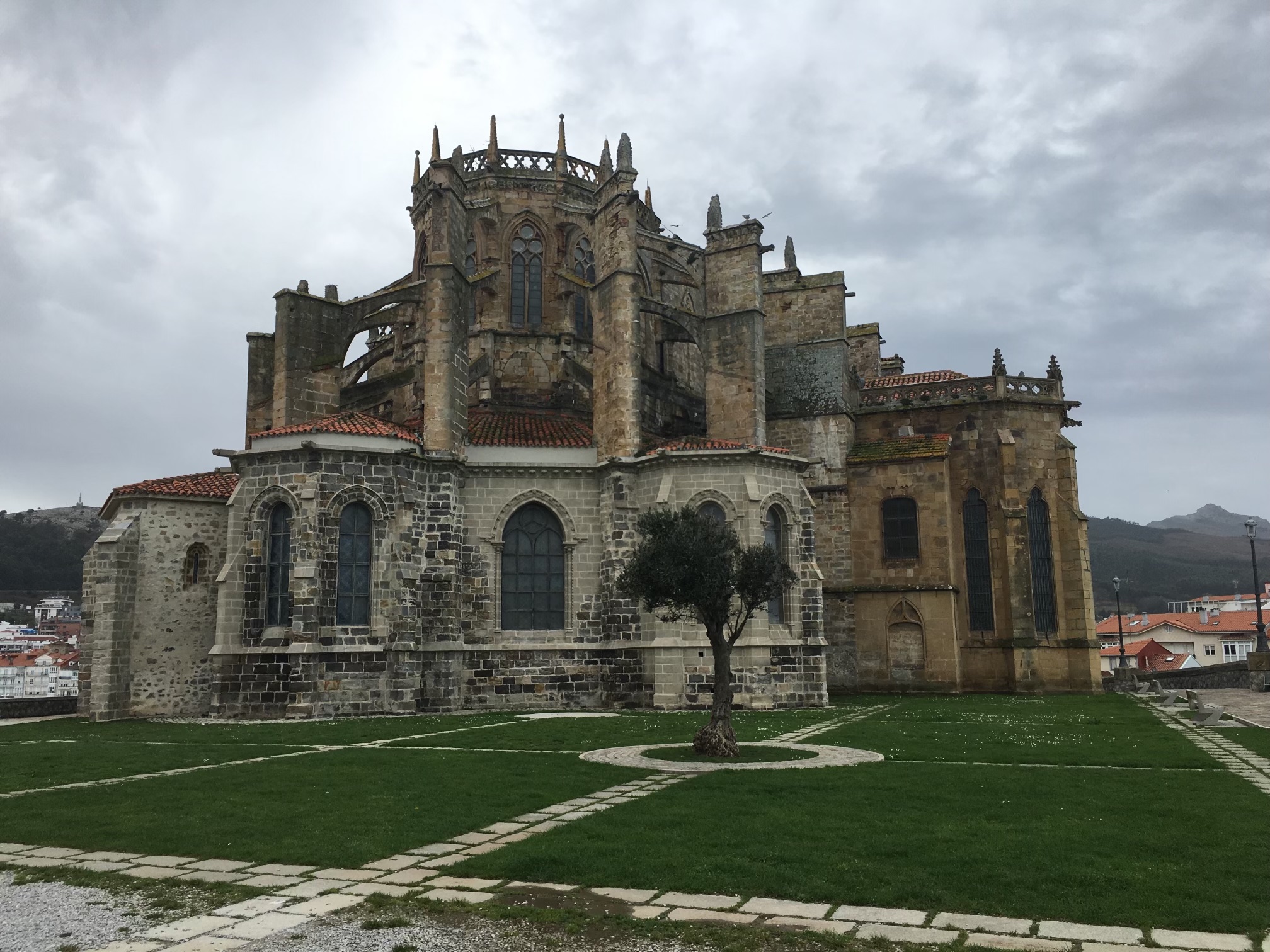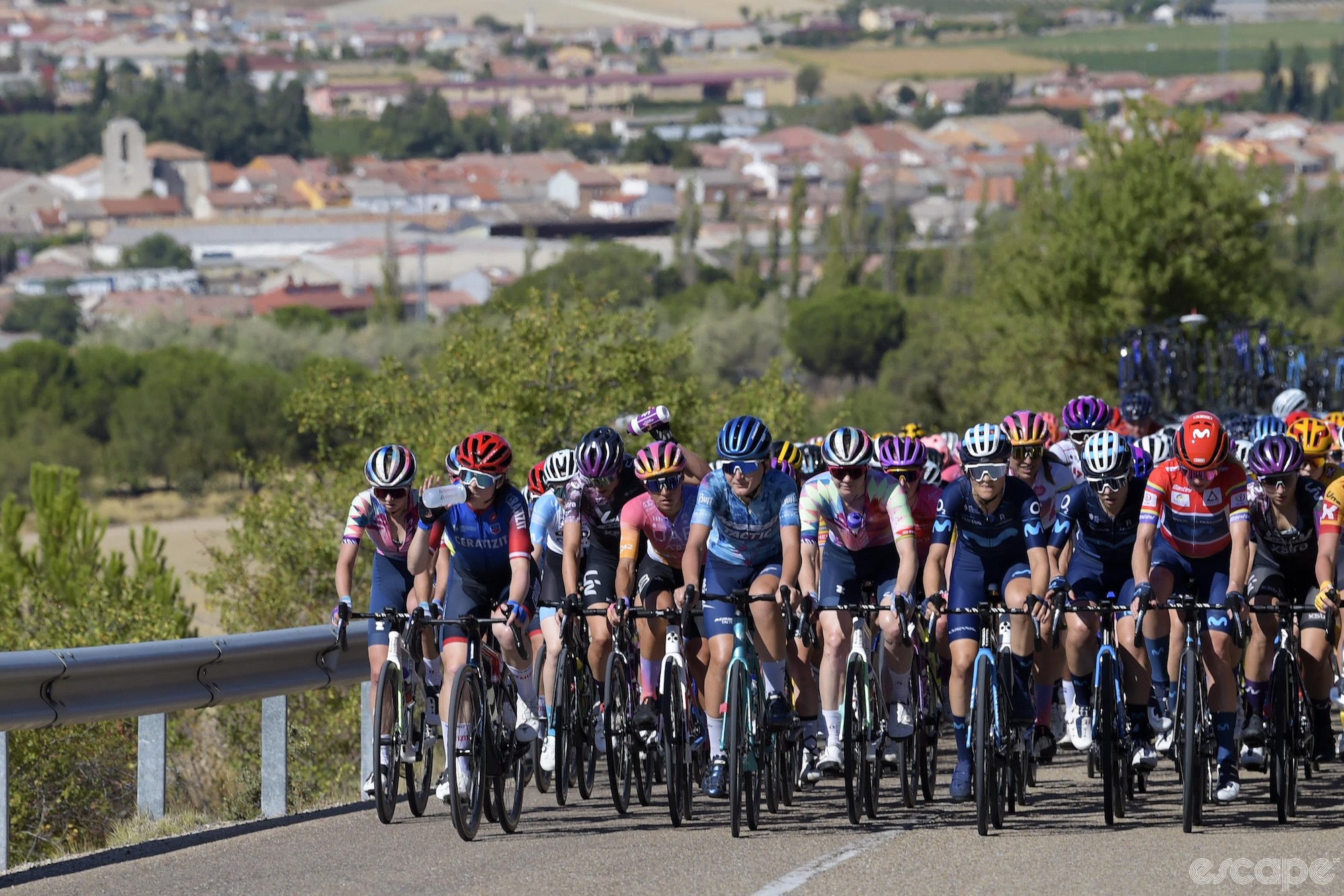For the first few race previews we’ve written here at Escape Collective, we’ve been supplementing all the info that we think you need to know with some more info that maybe you don’t really need to know. It’s been a great way to get in the mood for the racing – and we figure that at this point, we might as well go all in on the cultural notes with standalone stories for your enjoyment (well, we hope you’re enjoying them).
Abby Mickey has your race preview with everything you’ll need to watch things like an expert at La Vuelta Femenina. Meanwhile, as Escape‘s resident Hispanophile, I’ve put together some notes on the many awesome things you can see along the route, as well as just a few of the things you might eat or drink as culturally relevant fuel for your viewing experience.
A bike race that covers so much ground in Spain makes it easy to find things to talk about. This Vuelta visits more places with unique historical flair and culinary flavor than I can count, and certainly more than I can cover here. Let’s dive in!
This race gets underway in Torrevieja, and the second stage doesn’t stray far from there either. The coastal town is relatively close to Alejandro Valverde’s hometown of Murcia and also to the history lover’s paradise that is Cartagena, but is technically within the borders of the Valencian community, on the Costa Blanca in the province of Alicante. Those looking to take in a bit of medieval history will find that Torrevieja (literally “old tower”) is named that for a reason.
Throughout this region’s history, and particularly in the later Middle Ages and early modern period, local rulers built watchtowers to help defend the coast. The Torre del Moro and the nearby Torre de la Mata both have their origins in the medieval period, and they stand as humble reminders of the need to guard the region from seaborne raiders and pirates.

If you’ve work up an appetite while reading so far, the start of the race is your excuse to enjoy some paella. It may be a symbol of Spanish cuisine the world over, but it’s a Valencian dish in particular, and since the first two stages take place in the Valencian Community (albeit about as far from the capital as you can possibly get), why not dive into some paella while you can?
It’s a popular enough dish globally that I won’t dedicate too much time to explaining what paella is, but for those who don’t know, at its heart, paella is a dish of rice cooked with olive oil and broth in a large pan. Unlike Italian risotto, paella is not stirred while the rice absorbs the broth in cooking, and the charred crust that develops on the bottom – called socarrat – is part of what gives paella its distinctive appeal. The most traditional recipe features rabbit, chicken, and vegetables, with seafood paella being the other most-famous variety. It’s a hearty meal and different parts of Valencia have different takes on how to make it, though most in the region would agree that mixing protein from the land and the sea together in the same meal is just not acceptable.
After the first two stages, the race will head northwest into central Spain and the Castile region. Stages 3 and 4 take place within Castilla-La Mancha, in the windswept heartland of Miguel Cervantes’s masterpiece Don Quixote.
In addition to the famous windmills, you’ll also come across some fascinating historical sites in this region. In Cuenca, which hosts the start of Stage 4, you can still visit the ruins of a fortress first built in the Islamic period, which began in the eighth century. For hundreds of years, most of the Iberian peninsula was part of Al-Andalus, the Arabic name for the region that today lives on in the name of Andalucía, further south. Cuenca’s ruined castle is just one example of the seemingly innumerable fortresses in the region, built either by the rulers of Al-Andalus or the Castilian kings who would take over in the later medieval period. Cuenca is also home to the famous “Hanging Houses,” a complex of homes hundreds of years old built on a cliff high above a river gorge.
If you enjoy cheese, you’re in luck, because this is the home of Manchego. One of Spain’s best known food exports, Manchego is an aged cheese derived from sheep’s milk, and by law it must be produced in the region of La Mancha.
After a two-day sojourn in Castilla-La Mancha, La Vuelta Femenina heads into the mountains north of Madrid for Stage 5 before two final stages in northern Spain near the coast, respectively in Cantabria and Asturias. Both are historical treasure troves, but I’ll do my best to keep this short. Let’s start with Castro Urdiales, where Stage 6 gets underway. A seaport that wears its medieval heritage on its sleeve, it is the home of the Santa María de la Asunción church, whose Gothic style and well-manicured grounds make an awesome sight to be behold. With an austere castle a stone’s throw away, it’s easy to soak up the medieval vibes when you’re walking around down by the water in Castro Urdiales.

To close things out at this Vuelta, riders will climb to Lagos de Covadonga on Stage 7. Covadonga, a small town high in the mountains, is famous in Spain as the site of an eighth-century battle between one force led by King Pelagius of Asturias and another of soldiers from the Umayyad Caliphate in Al-Andalus, often considered the start of the Reconquista, a centuries-long effort by Christian kingdoms to re-take the Iberian territory lost to the Caliphate.
The tiny kingdom of Asturias would grow and evolve, splitting into some of the major kingdoms of the medieval period and so this early Christian victory used to be given huge significance in traditional Spanish historiography, although today, it’s less clear how big of a deal it really was at the time. Nonetheless, Covadonga continues to be a part to the Spanish national consciousness.
The peloton will ascend up from the town towards a pair of scenic glacial lakes in one of the hardest climbs in the Iberian Peninsula. As the riders finish the race, you could consider celebrating with an Asturian cider, the beverage for which this region is best known.
In contrast to the typical cider brands popular in the US and the UK, Spanish cider is very, very dry, it’s acidic, and it is often cloudy with sediment. It is traditionally poured from high above a glass, ostensibly to help add bubbles. Just as importantly, this method of pouring also looks awesome, and isn’t that what it’s all about? Enjoy!
What did you think of this story?

